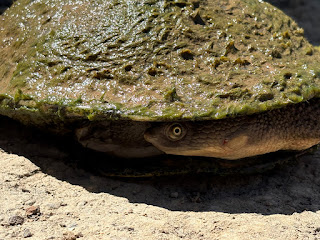Thursday, 4 December 2025
Goulburn and Murray Rivers Confluence
Tuesday, 25 November 2025
Friday, 21 November 2025
Broken Creek Reccy
Broken Creek, near Numurkah, is a popular fishing spot for native species like yellowbelly and Murray cod. Bait options include worms, freshwater shrimp and yabbies. The creek is also renowned for its abundant yabbies.
Its source is the Broken River, which diverges from it at Casey’s Weir near Benalla. The Broken River itself has a major storage facility, Lake Nillahcootie. From Casey’s Weir, the Upper Broken Creek flows north while the main creek flows west to the Murray River at Barmah. The Broken River is joined by Boosey Creek and Nine Mile Creek and its lower section receives regulated flows from irrigation channels.
Thursday, 9 October 2025
Snowy Creek Re-Visited
Saturday, 27 September 2025
Bread
Sourdough bread offers several health benefits due to its fermentation process, including improved digestibility and better blood sugar control, enhanced nutrient absorption and support for gut health from beneficial prebiotic fibres and antioxidants. Sourdough bread made with flour, wild yeast and bacteria is the oldest form of leavened bread.
So far I've made . . .






















































